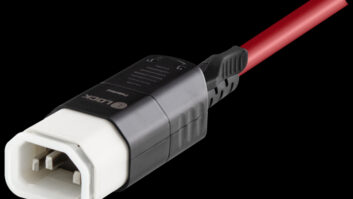


The price of AV over IP cameras has become cost-effective, making them the go-to for surveillance. However, some installations comprise hundreds of legacy analog cameras, making it impractical to replace all of them at once. Without an infrastructure or video control system that can accommodate both on the same network, facilities are burdened with ‘ripping and replacing’—or buying old camera technologies.
Control centers are moving to open architectures, enabling some to have phased upgrade paths. It’s critical to ensure the video wall controller can concurrently accept old and new camera sources such as DVI, SDI, DisplayPort, older IP methods as well as the latest IP codex—and with varying resolutions.
“Big installations may have cameras that have been there for years, and if they want to add new ones, some are going to be HDMI or DVI out, others will be IP out,” says Darin Crosby, Global VP Sales at Datapath’s Philadelphia, Pennsylvania headquarters. “Being able to switch instantly between the sources and display them all on the screen, and size them any size you want, is probably the most important point.”
This flexibility comes with the ability to have multiple SQX boards and baseband capture cards in the chassis of the video wall controller. “You need a system that can ingest all of those seamlessly, display them side-by-side, and make it so that the operator doesn’t need to care if it’s the old system or the new,” says Mark Bohs, Director of Sales for the Americas at Datapath’s Philadelphia, Pennsylvania headquarters.


Related Reading: Recent technological advances are enabling AV designers, integrators, and managers of control centers to rethink lifecycle planning, reduce the amount of video wall controllers, and share content with satellite rooms more easily and securely for their customers. Sharing mission-critical content from a central control room to a crisis room or another secure location was once a desired feature, and is now a trend. Until recently, this has required duplicate AV equipment for each room.
This white paper discusses how the role of advanced AV/IT video wall control technologies and content collaboration tools is undergoing a sea change.

A video wall control system should be able to integrate with an open video management system (VMS) platform. “If an incident occurs, the operator can bring up the live camera feed from the IP cameras themselves, and at the same time go back and pull up a recorded feed from a network video recorder (NVR) on the VMS,” says Bohs. At the same time, they can look at the existing live stream and the NVR stream. “The VMS can tell the video wall what streams to display so the operator can then manipulate what they’re looking at on the video wall through the VMS,” he says.
Think beyond camera sources. “During a crisis event, the control center might want to see CNN News on the video wall, or they might want to have the Weather Channel on there as well,” Crosby adds. “Being able to grab all these different sources, regardless of where they come from, various web pages containing maps, media networks, or wherever and being able to throw them on screen is very powerful.”










